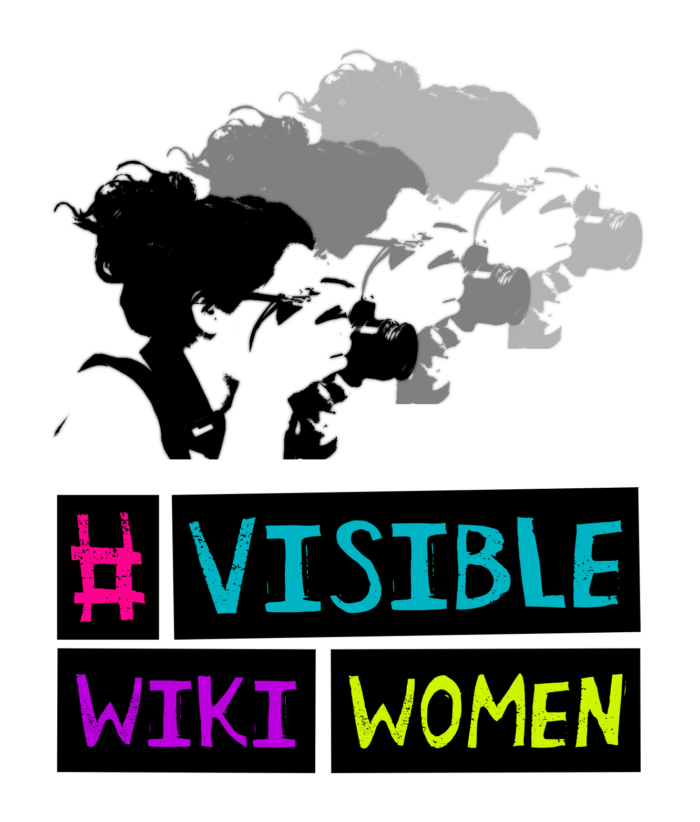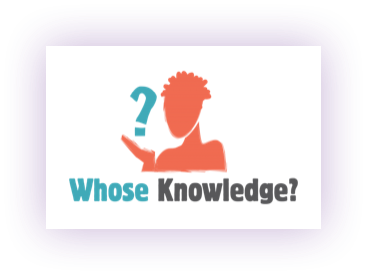The #VisibleWikiWomen 2020 campaign has ended. Thank you for another wonderful edition ?
Read our final blog post (also available in Spanish) to learn more about what we did this year… and keep making women visible on Wikipedia and the broader internet!

In the past three years, from March to May, the #VisibleWikiWomen campaign has brought over 14,000 images of women to Wikimedia Commons. This year alone, in the midst of the COVID-19 global pandemic, we and our partners – feminist organizations, Wikimedia communities, memory and cultural institutions – uploaded more than 3000 images to Commons. We are proud and grateful for this achievement but also aware that there is so much more to be done. Wikipedia (and the broader internet) are still missing many images of important and influential women, especially black, brown, indigenous and trans women.
This year’s campaign is over, but let’s continue making sure all women are fully seen and recognized!
The Issue
Women’s knowledge and contributions to the world are invisible in so many ways. When we look at women’s invisibility online, Wikipedia is a good proxy to explain why this is such a critical issue. Less than ¼ of Wikipedia biographies represent women. Many biographies of notable women don’t exist or are incomplete.
More often than not, women biographies don’t have images. We estimate that less than 20% of Wikipedia articles of important women have pictures. And, when women’s faces are missing from Wikipedia, that invisibility spreads. Half a billion people read Wikipedia every month, and it is the 5th most visited website in the world, so gaps in Wikipedia have a big impact on the broader internet.

Our plan for 2020
Inspired by the results of the previous campaigns, our goal for this third edition of #VisibleWikiWomen is to bring 5000 images of notable women to Wikimedia Commons, the big multimedia library for all Wikimedia projects, including the 299 language versions of Wikipedia.
Once again we will be “celebrating the colors of #VisibleWikiWomen” with #womenofcolors, our targeted effort to increase the images of influential black, brown, indigenous and trans women that are being uploaded to Wikipedia as part of the #VisibleWikiWomen campaign.
To reach this goal, we invite you – women’s and feminist organizations, culture and memory institutions, Wikipedia editors, user groups, chapters, and anyone who would like to give notable women the visibility and acknowledgment they deserve. We are excited to collaborate with previous year’s super amigxs and friends again and to welcome new partners from around the world.

How to participate?
You can join the #VisibleWikiWomen campaign by gathering and uploading quality images in the public domain, or under free license, to Wikimedia Commons under the VisibleWikiWomen category. These images could be photographs or drawings of women, as well as images of their work, with proper consent.
Besides uploading images to Commons, you can also participate in the campaign by:
- Hosting or attending local events in your communities where photos can be taken or uploaded
- Releasing your existing photos of notable women under free license
- Creating illustrations and drawings
- Promoting and publicizing this project by spreading the word about it and using the hashtags #VisibleWikiWomen and #WomenofColors on Facebook, Twitter, and Instagram.
And probably so much more! We’d love to see you coming up with new ideas that make the most sense for you and your communities.
If you need extra support for participating in the campaign, please email us at visiblewikiwomen[at]whoseknowledge[dot]org.
How to get involved?
Here are some additional ways to support the #VisibleWikiWomen campaign:
Content

- Help make our campaign multi-lingual by translating our Meta page, resources kit and the campaign pages of our website into different languages.
- Make lists of Wikipedia women biographies without images (by country, by occupation, by century, by activity) to raise awareness of the gender visual gap and create interesting challenges for participants.
- Write a new Wikipedia article inspired by an “orphan” women portrait (an image without an article) and use that image to illustrate it.
Spread the word

- Curate and share: select images you love, optionally mixed them with inspiring texts and art, and just share it with the hashtags #VisibleWikiWomen and/or #WomenofColors.
- Collaborative covering: if you are a journalist, a blogger, a podcaster or you just like to spread ideas online, you can create a piece of content about the campaign.
Support the campaign

- If you are a feminist organization, cultural and memory institution, media or other potential partner organization, become an institutional partner.
- If you are an individual connected to potential partners (like the ones mentioned above), please introduce them to the campaign!
- If you are connected with potential funders who may be able to fund and support this campaign, please bring them to the campaign!
- If you would like to financially support this year’s campaign, click here:
What we’ve done so far
In 2018 we launched the VisibleWikiWomen pilot edition, followed by a successful second edition in 2019. Highlights from our last year’s campaign include:
- 3700+ photos of women from around the world were uploaded to Wikimedia Commons at the end of the campaign! After that, the #VisibleWikiWomen category continued to be used, reaching more than 5600 uploaded images so far.
- The campaign “Celebrating the colours of #VisibleWikiWomen” from April 22nd to May 2nd added significant focus on images of important women of color, especially black, brown and indigenous women from across the world.
- Some images got a lot of attention. The portrait of Sojourner Truth, for example, was released by the Smithsonian American Women’s History Initiative, during the #VisibleWikiWomen campaign. According to Smithsonian’s Wikipedian in Residence, Truth’s portrait has had hundreds of thousands of views thanks to this campaign.
- 26 partners – Wikimedians, GLAM and feminist organizations – joined the campaign and were essential to add a wide range of women’s images to the Commons. Below you can see who they are.
Highlights from the #VisibleWikiWomen 2020 campaign include:
- We welcomed 13 new partners from around the world who joined us in uploading women’s images to Commons.
- Together with our partners and communities, we uploaded over 3000 images to Wikimedia Commons. These images are now illustrating over 2000 pages in more than 80 different Wikipedia languages and Wikidata.
- We created a significant new resource: the Guide for Cultural and Memory Institutions, or GLAM (galleries, libraries, archives and museums), to make Women Visible on Wikipedia.
- We highlighted the story of Vanessa Nakate, a Black and African activist, whose image was cropped out from a group photo in which she originally appeared with other young activists at the World Economic Forum in Davos.
- In episode 8 of our podcast Whose Voices? we featured Pamela Ofori-Boateng, a Ghanaian journalist, Wikimedian, and member of Open Foundation West Africa. We learned about her experience creating the Veronica bucket Wikipedia page, a sanitation set-up used for mitigating the scarcity of running water and encouraging proper hand washing, created by the Ghanaian biological scientist Veronica Bekoe.
- We organized an online edit-a-thon (or editatona): a multi-day and bilingual (English and Spanish) event in partnership with two of our partners, Take Back The Tech from APC and #SheTransformsTech from World Pulse. More than 50 people registered to the event, 20 people joined and 9 uploaded 35 new images to Wikimedia Commons during the editatona.
Our partners & friends

Resources
If you have never uploaded images to Wikipedia or Wikimedia Commons before, don’t worry, we have you covered! We created this #VisibleWikiWomen resource kit, where you will find instructions and practical advice on how to navigate the Wikiverse, especially how to use Wikimedia Commons.
The resource How to upload images to make women visible on Wikipedia and the internet, is particularly useful as it will guide you through the process of uploading images for this campaign.
Other related resources to help you are:
- Getting and giving consent for images on Wikipedia
- How to find images on the internet to illustrate Wikipedia
- Dos and Dont’s for adding images to Wikimedia Commons and Wikipedia
- How to create drawing for Wikipedia
- How to ask for image donations
- How to join VisibleWikiWomen as a campaign organizer in your local context
- Have a photographer present at edit-a-thons to photograph notable women with consent
- Guide for Cultural and Memory Institutions to make women more visible on Wikipedia
…and if you need inspiration, here are some lists of articles that are missing images of women on Wikipedia.
